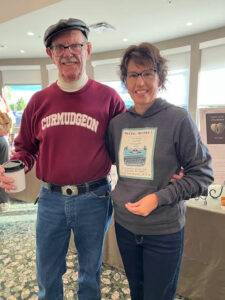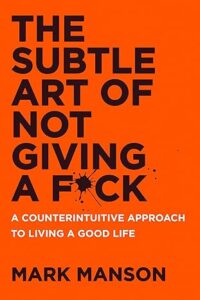Writing a novel is a huge commitment. It takes time and consistency and perseverance from beginning to end.

Imagine, if you will, a rider on the back of a stubborn elephant. The rider is excited to head out on a new adventure, but the elephant wants no part of it. The rider tries everything to make the elephant move — coercion, threats, bribes, begging, and bargaining — but nothing works. The elephant refuses to budge. And rightfully so. They’re majestic animals, with thoughts and feelings and families who love them, not amusement rides.
The frustrated rider jumps off the elephant, tugs the reins, shoves him from behind. Nothing works. If a two-to-seven-ton animal doesn’t want to budge, good luck trying to change their mind.
What if I told you this same struggle continues to play out in a writer’s mind while drafting a novel?
It’s true. Our brains have two independently functioning systems responsible for completing tasks: the rational side and the emotional side.
The rider is rational.
The elephant is emotional.
When these two sides clash, the writer accomplishes nothing. They may work all day, but they’re spinning their wheels. It’s an awful feeling.
The rational rider is small and insignificant compared to the emotional elephant. We can lie to ourselves about fame and fortune or whatever the big dream is, but unless we’re emotionally invested in our goals, it’ll never happen. The field of broken dreams is littered with stubborn elephants.
Numerous scientists have studied productivity, and they all agree on one thing: Having fun makes us more productive.
Pro Tip: Don’t worry about your word count. If you keep checking to tally your words, you’ll add unnecessary stress. Enjoy the journey of crafting a storyline. Block out all distractions and have fun with your characters.
The closer the reward, the harder we work.
We live in a world of immediate gratification. It’s why we’re told to use a universal link for our books. No one wants to click twice.
The coffee drinker will buy more coffee when their loyalty card is about to run out. Why? To score a free coffee.
This behavior is known as the goal gradient hypothesis, first discovered in rats and other animals in 1932 by Clark Hull PhD. The same holds true for humans. The bigger the task (crafting a novel), the harder we must work to get the reward (a complete first draft) and the easier it is to give up.
Pro Tip: Break the WIP into small goals. “I will have one piece of chocolate when I finish this chapter.” By rewarding yourself for reaching smaller goals, it builds confidence and joy and momentum.
Making Visible Progress Improves Motivation
Researchers offered participants two types of loyalty cards: a ten-point card and a twelve-point card with the first two spots already stamped. Can you guess which one they chose?
Even though both cards required the participants to buy ten coffees, the twelve-point card was the clear favorite. Why? The two stamps created the illusion that the participants would receive a free coffee sooner. While the distance to the goal was the same, those stamps showed visible progress.
Visible progress boosts motivation.
Pro Tip: End every writing session mid-scene. Doesn’t matter if the words are flowing. Stop. The next morning, it’s much easier to finish a scene than stare at a blank page.
I play mind-games with myself all the time. Once I’ve written the final page of the manuscript, I mark it with *** and keep going. Everything after the asterisks becomes the hook for the next book. That way, I never start a new manuscript with a blank page.
Productivity Fluctuates Throughout the Day
Researchers found that memory, perception, and problem-solving skills fluctuate according to a person’s chronotype, the natural inclination for your body to sleep (i.e., early bird vs. night owl).
I’m most productive in the mornings and between 7 p.m. – 8 p.m. It’s strange, I know, but for some reason new ideas pop into my mind between those hours, so I write in Notes on my phone.
Consistency trains the brain.
Pro Tip: Take note of when you’re most productive during the day. If you can’t write at that time, train yourself to write at the second most productive time of day for you.
Surprising Facts Improve Learning and Memory
Moments of intellectual surprise can boost memory, curiosity, and make you a more effective learner. Also, those who are curious about the world — like writers — and learn on a regular basis (i.e., research) extend their longevity and lower their risk of brain-related diseases like Alzheimer’s or dementia.
A few fun facts that may surprise you:
- Jays are not blue. There are no blue feathers in the Animal Kingdom. What we see is an optical illusion. Blue Jays are gray.
- A Greenland shark born before Isaac Newton was still alive in 2020.
- Polar Bears are not white. Though polar bear fur appears white, it’s actually transparent. Long hollow hair shafts reflect light much like ice does, making polar bears appear white or yellow. Beneath their thick coats, polar bears have black skin that absorbs the sun’s warmth. To a deer, polar bears look green.
Pro Tip: If you’re stuck, research other elements of the story. You might be surprised by what you find. Never stop learning.
All these actionable tips and tricks will help you move the elephant in the right direction.







 Raptors are some of the most successful predators on the planet. From owls, eagles, and vultures to hawks, falcons, and other birds of prey, raptors are skilled hunters with incredible senses,
Raptors are some of the most successful predators on the planet. From owls, eagles, and vultures to hawks, falcons, and other birds of prey, raptors are skilled hunters with incredible senses,  By Elaine Viets
By Elaine Viets


 I stumbled across the subject of The Backwards Law by accident—a happy accident that led me to The Subtle Art of Not Giving a F*ck. Excellent book that I devoured in two sittings.
I stumbled across the subject of The Backwards Law by accident—a happy accident that led me to The Subtle Art of Not Giving a F*ck. Excellent book that I devoured in two sittings. Every character is the hero of their own story. Even the villain.
Every character is the hero of their own story. Even the villain.